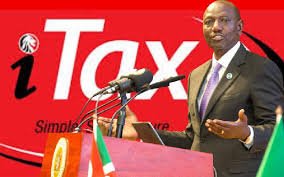The Kenya Revenue Authority (KRA) has reported a record collection of KES 2.571 trillion for the 2024/25 fiscal year. This performance, which represents a 6.8% year-on-year growth and a 100.6% achievement of the revised revenue target, is a reflection of the country’s steady macroeconomic fundamentals and the tax authority’s growing institutional sophistication.
Kenya’s Evolving Fiscal Strategies
The Kenya Revenue Authority (KRA) in a bid to drive revenue growth, has increasingly used digital tools, real-time compliance systems, and policy reforms to widen the tax base and enhance collection. There have also been strategic programmes like tax amnesties, the offsetting of pending tax refunds under Section 47(2)(b) of the Tax Procedures Act, and efforts to formalise the informal sector, which has helped improve compliance while also easing the burden on taxpayers.
Additionally, the government has adopted more flexible and pragmatic fiscal planning by revising revenue targets based on prevailing macroeconomic conditions, an approach which allows room for fiscal discipline without overstretching the tax authority or overburdening taxpayers. There is also a growing emphasis on expanding customs revenue and leveraging public-private partnerships for infrastructure development to reduce fiscal pressure on government coffers.
Breakdown of Kenya’s 24/25 Tax Collection Figures
Government/Exchequer revenue, the backbone of national funding, reached KES 2.323 trillion, growing 4.5% year-on-year and delivering a 99% performance rate. This was driven by agency revenue collections which totalled KES 248.28 billion, outperforming targets by nearly 20% with a 119.47% success rate. Of this figure, customs revenue stood out as a major driver, bringing in KES 879.33 billion, growing at an impressive 11.1% YoY, and achieving a 105.9% performance rate underscoring the effectiveness of KRA’s border and trade facilitation systems.
Domestic revenue collections reflected a slight moderation, coming in at KES 1.688 trillion (98.1% of target), owing to KRA’s strategy of continuous taxpayer engagement, improved digital infrastructure, and real-time compliance monitoring. Corporation tax collections rose to KES 304.83 billion, growing at 9.59% YoY, nearly doubling the 4.9% growth rate recorded in the previous fiscal year.
PAYE and VAT collections experienced moderated growth at 3.3% and 4.2% respectively but remained broadly in line with economic realities such as wage stagnation and consumer belt-tightening. Importantly, VAT collections accelerated in the second half of the fiscal year, hinting at a rebound in consumption and business activity.
KRA’s proactive use of Section 47(2)(b) of the Tax Procedures Act, which allows unresolved tax refund claims to be offset against future obligations, resulted in KES 49.67 billion in adjustment vouchers, up from KES 24.85 billion a year earlier. The successful execution of the tax amnesty programme on the other hand further reinforced the authority’s strategic agility as it yielded KES 29.0 billion in revenue and benefitted over 3.5 million taxpayers, unlocking KES 95.65 billion in waivers.
This amnesty achieved a 96.67% performance rate reflecting the programme’s effectiveness in onboarding previously disengaged taxpayers and enhancing voluntary compliance.
Kenya’s Efforts to Expand Tax Base
KRA’s efforts to expand the tax base also continued to bear fruit, generating KES 24.9 billion in additional revenue in 2024/25, a slight increase from KES 24.62 billion in the previous year. This growth shows consistent progress in widening Kenya’s revenue net and signals institutional commitment to long-term fiscal sustainability.
Kenya’s 2024/25 revenue performance reaffirms KRA’s transformation from a basic tax collector to a sophisticated public finance institution leveraging policy, technology, and legal tools to enhance compliance, drive growth, and support Kenya’s national development. KRA’s performance this year serves as a promising indicator of the country’s growth.
























